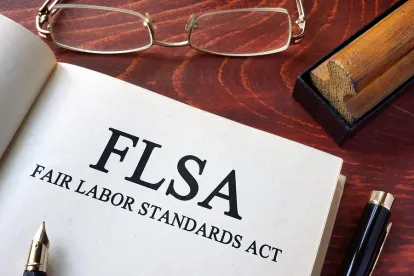The US Department of Labor (DOL) recently announced an update to its regulations interpreting joint employer status under the Fair Labor Standards Act (FLSA) that will go into effect on March 16, 2020. This update sets forth a four-factor balancing test for determining FLSA joint employer status in situations where an employee performs work for one employer that simultaneously benefits another entity or individual. (We are not talking about the scenario where an employee works one set of hours in a workweek for one employer and a separate set of hours in the same workweek for another employer.) The balancing test examines whether the potential joint employer (1) hires or fires the employee; (2) supervises and controls the employee’s work schedule or conditions of employment to a substantial degree; (3) determines the employee’s rate and method of payment; and (4) maintains the employee’s employment records. Of course, the facts in a particular case will dictate whether a person or an entity is a joint employer, and the appropriate weight given to each factor will also vary based on the circumstances.
The DOL took the opportunity to enumerate factors that are not relevant to the determination of joint employer status. For example, the following factors do not make joint employer status more or less likely under the FLSA: whether the employee is economically dependent on the potential joint employer; operating as a franchisor; and the potential joint employer’s contractual agreements with the employer requiring quality control standards to ensure the consistent quality of the work product, brand, or business reputation.
The DOL also included examples of how to apply the joint employer test. For example, where an office park company hires a janitorial services company to clean the building after hours, agrees to pay the janitorial company a fixed fee for these services, and reserves the right to supervise the janitorial employees in their performance of those cleaning services, the office park is not a joint employer of the janitorial employees because it does not hire or fire the employees, determine their rate or method of payment, or exercise control over their conditions of employment.
On the other hand, we can tweak the facts a bit to change up the outcome. Here, the contract does not give the office park the authority to hire or fire the janitorial employees or to supervise their work, but in practice, someone from the office park oversees the work of the janitorial employees by assigning specific tasks, providing them with instructions, and keeping records tracking their hours worked. And, on several occasions, the office park has requested the janitorial company hire or terminate individual workers, and the janitorial company agreed without question each time. In this scenario, the office park is a joint employer because it exercises sufficient control, both direct and indirect, over the terms and conditions of employment.
While this likely will not change how most companies operate, it serves as a reminder to examine whether your company may be considered a joint employer of any workers. If your business relies on workers you do not consider to be employees or independent contractors of your company, it would be prudent to consult with your employment lawyers to evaluate whether your company may be deemed a joint employer. If so, you may want to change how you interact with these workers or, at minimum, take precautionary measures to limit potential liability. Otherwise, you run the risk of being surprised when one of those workers sues both the employer and your company (as a joint employer) for an alleged violation of the FLSA — especially if your company is viewed as having deeper pockets.




 />i
/>i
